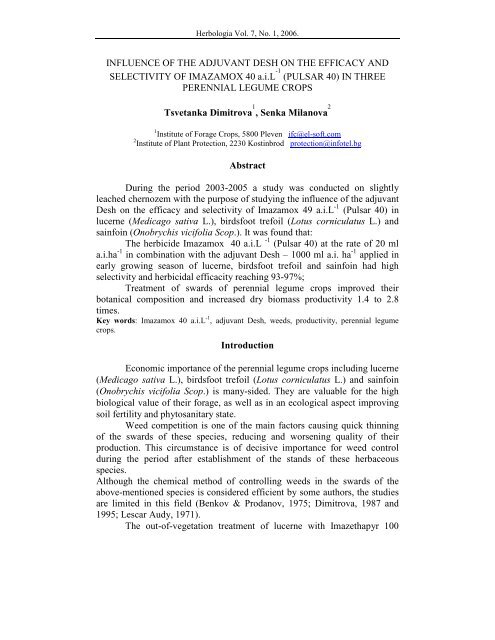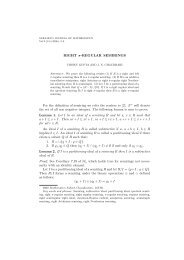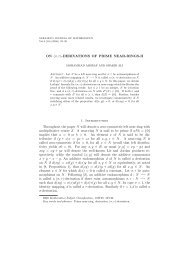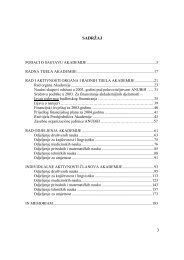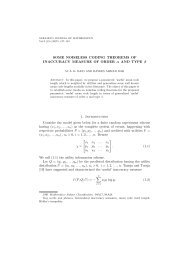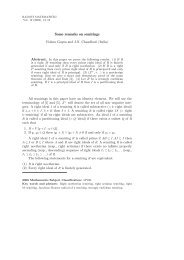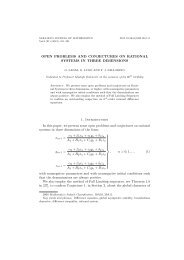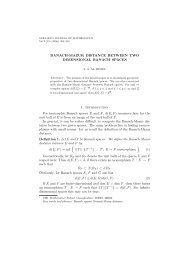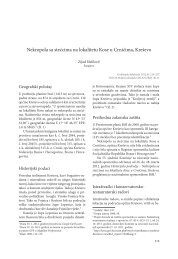HERBOLOGIA - anubih
HERBOLOGIA - anubih
HERBOLOGIA - anubih
Create successful ePaper yourself
Turn your PDF publications into a flip-book with our unique Google optimized e-Paper software.
Herbologia Vol. 7, No. 1, 2006.<br />
INFLUENCE OF THE ADJUVANT DESH ON THE EFFICACY AND<br />
SELECTIVITY OF IMAZAMOX 40 a.i.L -1 (PULSAR 40) IN THREE<br />
PERENNIAL LEGUME CROPS<br />
Tsvetanka Dimitrova 1 , Senka Milanova 2<br />
1 Institute of Forage Crops, 5800 Pleven ifc@el-soft.com<br />
2 Institute of Plant Protection, 2230 Kostinbrod protection@infotel.bg<br />
Abstract<br />
During the period 2003-2005 a study was conducted on slightly<br />
leached chernozem with the purpose of studying the influence of the adjuvant<br />
Desh on the efficacy and selectivity of Imazamox 49 a.i.L -1 (Pulsar 40) in<br />
lucerne (Medicago sativa L.), birdsfoot trefoil (Lotus corniculatus L.) and<br />
sainfoin (Onobrychis vicifolia Scop.). It was found that:<br />
The herbicide Imazamox 40 a.i.L -1 (Pulsar 40) at the rate of 20 ml<br />
a.i.ha -1 in combination with the adjuvant Desh – 1000 ml a.i. ha -1 applied in<br />
early growing season of lucerne, birdsfoot trefoil and sainfoin had high<br />
selectivity and herbicidal efficacity reaching 93-97%;<br />
Treatment of swards of perennial legume crops improved their<br />
botanical composition and increased dry biomass productivity 1.4 to 2.8<br />
times.<br />
Key words: Imazamox 40 a.i.L -1 , adjuvant Desh, weeds, productivity, perennial legume<br />
crops.<br />
Introduction<br />
Economic importance of the perennial legume crops including lucerne<br />
(Medicago sativa L.), birdsfoot trefoil (Lotus corniculatus L.) and sainfoin<br />
(Onobrychis vicifolia Scop.) is many-sided. They are valuable for the high<br />
biological value of their forage, as well as in an ecological aspect improving<br />
soil fertility and phytosanitary state.<br />
Weed competition is one of the main factors causing quick thinning<br />
of the swards of these species, reducing and worsening quality of their<br />
production. This circumstance is of decisive importance for weed control<br />
during the period after establishment of the stands of these herbaceous<br />
species.<br />
Although the chemical method of controlling weeds in the swards of the<br />
above-mentioned species is considered efficient by some authors, the studies<br />
are limited in this field (Benkov & Prodanov, 1975; Dimitrova, 1987 and<br />
1995; Lescar Audy, 1971).<br />
The out-of-vegetation treatment of lucerne with Imazethapyr 100


